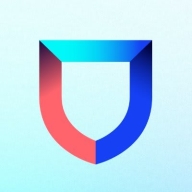


Check Point CloudGuard CNAPP and Lacework FortiCNAPP are significant players in cloud-native application protection. CloudGuard appears to have an edge due to its strong ROI from reducing vulnerabilities and increasing efficiency in compliance and risk management.
Features: Check Point CloudGuard CNAPP offers comprehensive features like automated compliance checks, centralized firewall management, and real-time threat intelligence. Lacework FortiCNAPP provides features such as anomaly detection, compliance scanning, and vulnerability assessment through agent-based monitoring.
Room for Improvement: Check Point CloudGuard CNAPP users have noted the need for simplification of its licensing model and cost-effectiveness in scaling infrastructure. Lacework FortiCNAPP could improve by addressing the perception of being slightly expensive and enhancing flexibility in its feature configuration.
Ease of Deployment and Customer Service: Both products are regarded for their ease of deployment. CloudGuard offers a straightforward setup through its SaaS model, while Lacework integrates seamlessly with existing cloud infrastructures. Customer service is responsive for both solutions, offering support for diverse platforms.
Pricing and ROI: CloudGuard's pricing is seen as reasonable, yet users must assess cost implications as usage scales. Lacework's pricing has stabilized, offering more flexible licensing options, although it can be seen as slightly expensive. Both demonstrate ROI through compliance efficiency and reduced manual tasks.
The detailed information PingSafe gives about how to fix vulnerabilities reduces the time spent on remediation by about 70 to 80 percent.
After implementing SentinelOne, it takes about five to seven minutes.
Cloud Native Security does offer ROI.
The compliance has improved as our overall compliance score against CIS benchmark has improved from around 72 to 92% within the first three months of adoption.
Monitoring cloud security automatically ensures a return on investment.
When we send an email, they respond quickly and proactively provide solutions.
They took direct responsibility for the system and could solve queries quickly.
Having a reliable team ready and willing to assist with any issues is essential.
When I need help or have open questions, or if I require the capability to deploy a quick test environment, there are always people I can contact at Check Point to get my information or the environment as fast as I need it.
I have a dedicated support engineer and a presales engineer dedicated to me.
Customer support for Check Point CloudGuard CNAPP has been responsive and knowledgeable.
I would rate it a 10 out of 10 for scalability.
Scalability is no longer a concern because Cloud Native Security is a fully cloud-based resource.
I would rate the scalability of PingSafe 10 out of 10.
Check Point CloudGuard CNAPP scales efficiently in the multi-cloud environment.
I never had any performance-related issues.
It's a reliable solution that the organization is increasingly adopting for its robust features and security.
We contacted Cloud Native Security, and they addressed it in a day.
The only downtime we had was when switching from V1 to V2 but it was smooth.
If there are errors, it is sometimes challenging to elaborate or troubleshoot since it is not transparent enough to understand what to search for.
It is rapidly evolving, and sometimes mistakes occur, necessitating testing.
If they can merge Kubernetes Security with other modules related to Kubernetes, that would help us to get more modules in the current subscription.
As organizations move to the cloud, a cloud posture management tool that offers complete cloud visibility becomes crucial for maintaining compliance.
I would also like to see Cloud Native Security offer APIs that allow us to directly build dashboards within the platform.
I need more integration from the code-to-cloud principle.
It would be nice to have periodic updates on what people should do, maybe with some analysis or something.
I require consistency in the user interface to ensure everything is streamlined into the same look and feel.
I believe the enterprise version costs around $55 per user per year.
There are some tools that are double the cost of Cloud Native Security.
I recall Cloud Native Security charging a slightly higher premium previously.
In terms of ROI, we can see time savings for audit preparation of at least 30-40%.
It is not cheap, of course, yet it is a necessity.
From a licensing and cost perspective, it is really competitive.
This helps visualize potential attack paths and even suggests attack paths a malicious actor might take.
The infrastructure-as-code feature is helpful for discovering open ports in some of the modules.
This tool has been helpful for us. It allows us to search for vulnerabilities and provides evidence directly on the screen.
One of the main reasons we use the solution is that it is great at identifying risks that are critical to our business.
The CDR helps detect anomalous behavior and respond to threats before they become an issue.
Check Point CloudGuard CNAPP offers a unified, modular platform that combines CSPM, CWPP, CIEM, code security, and cloud detection and response.
| Product | Market Share (%) |
|---|---|
| SentinelOne Singularity Cloud Security | 2.3% |
| Check Point CloudGuard CNAPP | 1.4% |
| Lacework FortiCNAPP | 1.3% |
| Other | 95.0% |



| Company Size | Count |
|---|---|
| Small Business | 45 |
| Midsize Enterprise | 20 |
| Large Enterprise | 54 |
| Company Size | Count |
|---|---|
| Small Business | 54 |
| Midsize Enterprise | 17 |
| Large Enterprise | 57 |
| Company Size | Count |
|---|---|
| Small Business | 4 |
| Midsize Enterprise | 4 |
| Large Enterprise | 3 |
SentinelOne Singularity Cloud Security offers a streamlined approach to cloud security with intuitive operation and strong integration capabilities for heightened threat detection and remediation efficiency.
Singularity Cloud Security stands out for its real-time detection and response, effectively minimizing detection and remediation timelines. Its automated remediation integrates smoothly with third-party tools enhancing operational efficiency. The comprehensive console ensures visibility and support for forensic investigations. Seamless platform integration and robust support for innovation are notable advantages. Areas for development include improved search functionality, affordability, better firewall capabilities for remote users, stable agents, comprehensive reporting, and efficient third-party integrations. Clarity in the interface, responsive support, and real-time alerting need enhancement, with a call for more automation and customization. Better scalability and cost-effective integration without compromising capabilities are desired.
What are SentinelOne Singularity Cloud Security's standout features?SentinelOne Singularity Cloud Security is deployed in industries needing robust cloud security posture management, endpoint protection, and threat hunting. Utilized frequently across AWS and Azure, it assists in monitoring, threat detection, and maintaining compliance in diverse environments while providing real-time alerts and recommendations for proactive threat management.
Check Point CloudGuard CNAPP offers comprehensive cloud security with features like dynamic access control, asset protection, and compliance checks, tailored for organizations seeking enhanced governance across AWS, Azure, and GCP platforms.
Check Point CloudGuard CNAPP provides robust capabilities, including centralized firewall management, IAM scanning, and real-time visibility. Its strengths lie in predictive visualization, threat intelligence, and auto-remediation, making it a valuable tool for risk mitigation and compliance management. The platform's integration and responsiveness enhance cloud security, ensuring alignment with industry standards and effective threat protection.
What are the key features of Check Point CloudGuard CNAPP?Organizations in finance, healthcare, and retail frequently implement Check Point CloudGuard CNAPP for compliance and security across cloud environments. It assists with workload protection, threat detection, and regulatory obligation fulfillment, proving effective for securing applications and monitoring API interactions.
Lacework FortiCNAPP provides robust cloud security, combining vulnerability management and multi-cloud insight with user-friendly controls, machine learning detection, and compliance support.
Lacework FortiCNAPP specializes in cloud security by merging machine learning anomaly detection with agent-based vulnerability management to offer detailed alerts and compliance reports. Its comprehensive approach allows continuous monitoring across AWS and Kubernetes, providing insights from an attacker's perspective. The platform offers automation and seamless Slack integration, facilitating collaborative and efficient cloud security management. Users value its ability to handle multi-cloud environments and scan IAC scripts, configurations, and compute nodes across AWS and GCP.
What are the key features?Organizations across sectors leverage Lacework FortiCNAPP for cloud security, focusing on compliance, security posture, and vulnerability management. It is widely used for monitoring AWS and Kubernetes environments, scanning IAC scripts, configurations, and securing compute nodes. It supports multi-cloud security posture management and log ingestion, enabling companies to maintain strong cloud infrastructures without dedicated security layers.
We monitor all Vulnerability Management reviews to prevent fraudulent reviews and keep review quality high. We do not post reviews by company employees or direct competitors. We validate each review for authenticity via cross-reference with LinkedIn, and personal follow-up with the reviewer when necessary.